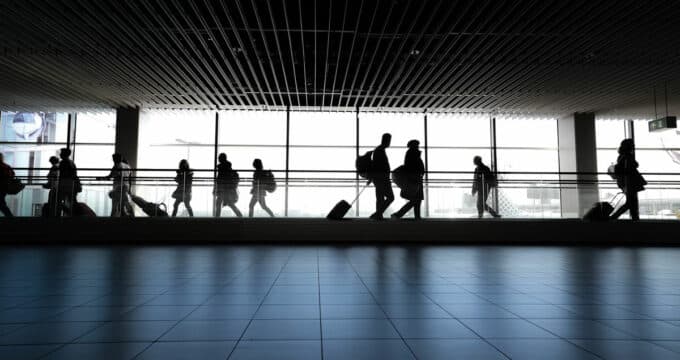China’s borders open at last with easing of remaining restrictions on international travel
- The Chinese border has reopened and China is once again accepting visa applications
- Many countries are requiring proof of a negative pre-departure COVID result from Chinese travellers, which is irritating the Chinese government, but experts say that there is pent-up demand for travel and study abroad in China
After weeks of public protest at the end of 2022, the Chinese government began to drop the most extreme of its COVID containment measures and has (1) opened its borders for incoming and outgoing travel and (2) resumed the processing of visa and residence permit applications, including those of international students.
The long-awaited policy change is expected to boost international student mobility, though there are some concerns about how China will react to multiple countries imposing extra precautionary steps in welcoming Chinese outbound travellers.
Reactions around the world
Around the world, governments have scrambled to react to China’s reversal of its Zero COVID policies.
On the one hand, the shift and re-opening is of course exciting. The Chinese economy had slowed drastically as a result of the government’s “Zero COVID” policies, Chinese people had suffered psychologically from isolation due to repeated lockdowns, and – of special relevance for our readers – student mobility had been massively curtailed while borders were closed.
On the other, the rapid lifting of COVID measures is worrisome. The virus is now spreading rapidly within China. According to China’s National Health Commission, at least a quarter of a billion people in China contracted COVID in December. While there are now reports that the virus’s spread has peaked in some cities, no one is expecting a quick end to the virus’s ability to romp through the country as testing and quarantine measures have fallen away. The New Yorker reports that:
“A second, possibly more punishing wave could tear through rural areas in February or March, after millions of people trek home for the Lunar New Year. Projections of the eventual fallout vary, but some models anticipate that one to two million people will die of COVID in the coming months.”
Some of the first flights out of China after the abrupt relaxations of COVID rules by the government were full of the virus. Time Magazine reports that, “Among one of the first [China to Italy] flights subjected to testing, more than a third of all its passengers tested positive for COVID-19. On another flight, half of the passengers tested positive.”
More than a dozen foreign governments have adopted measures to protect their populations from COVID-infected air travellers and visitors – an uncomfortable position and task given China’s power and ongoing sensitivity to foreign governments’ “discrimination” towards it and its people. That sensitivity stems from the unfortunate and often xenophobic backlash against China and Chinese abroad when COVID was first detected in March 2020 in Wuhan.
For the most part, the additional requirement for Chinese travellers is to provide proof of a negative COVID result no more than 48 hours before travelling. Countries insisting on this include many European countries (e.g., Italy, France, Spain, UK, and Germany) as well as Canada, the US, Australia, India, Israel, Japan, Malaysia, Qatar, South Korea, and Taiwan.
But Japan and South Korea also announced additional measures such as limiting the number of incoming flights from China, restricting where China-originated flights can land, and restricting the number of short-term visas issued. In retaliation for these “discriminatory” measures, China has stopped providing short-term visas to tourists from Japan and South Korea.
No more quarantine for arrivals in China
Otherwise – as of this writing – passengers arriving in China no longer have to quarantine and do not need to apply for a health code. They must, however, produce a negative PCR result no more than 48 hours before travelling to China. In addition, China is now accepting applications for the extension, renewal, and re-issuance of visas, stay permits, and residence permits.
What will impact be on international student mobility?
Experts believe that there is pent-up demand in China for study abroad, particularly given the country’s economic slowdown that took hold by the end of the Zero Covid era; a troubled economy is always a push factor for outbound mobility. Many students and families are eager to venture into the world again, and CNN reports that data from Trip.com Group shows “search interest for outbound flights from mainland China rose by 83% in the 11 days after the [border reopening] announcement, compared with the 14 days before it.”
However, there are reports that Chinese travellers are choosing where to travel carefully – and based on how they are being received. For example, around the same time that Japan and South Korea imposed relatively stringent rules including COVID testing, “[Chinese] search interest for Thailand and Singapore grew by 176% and 93%.” Thailand and Singapore require only that all travellers provide proof of vaccination – not of a negative pre-departure COVID test.
For additional background, please see:














